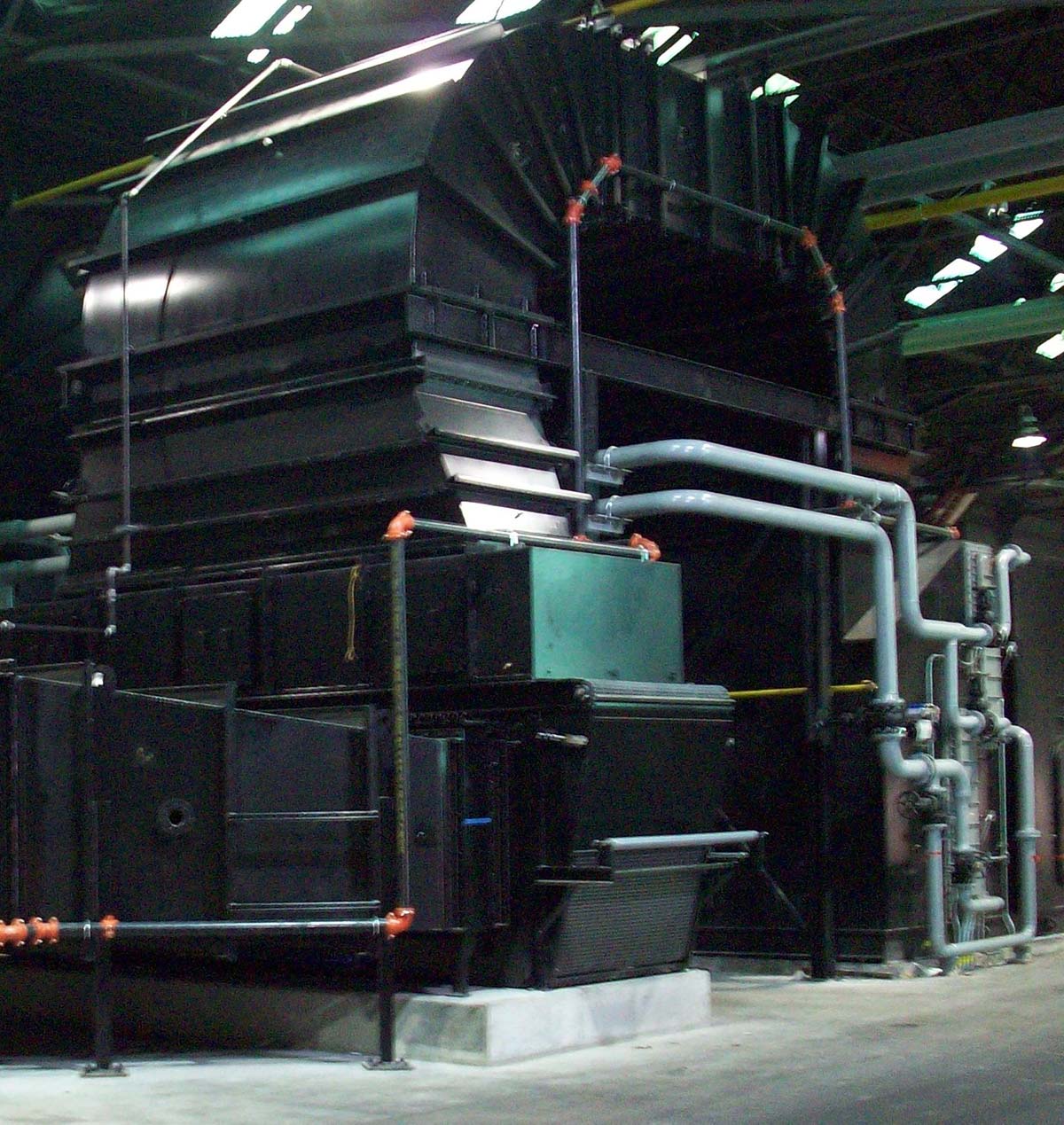
Background
A Fortune 500 aluminum company has a plant that produces, among other products, aluminum sheet for end use in transportation, building and construction, recreation, and other markets. During the production process, large slabs of aluminum are rolled under pressure on hot and cold rolling mills. Lubricants used the rolling process are released via evaporation at the elevated process temperatures and exhausted from the mills. The evaporated emissions quickly condense to create a submicron oil mist, typically also with a small amount of solid particulate present. At this plant, this exhaust was controlled by an oil mist control device that employed cyclonic separation as the removal mechanism, a device that is very prevalent across the metal rolling industry.
The plant had developed a process that yielded significantly higher throughput for one of the rolling mills. However, this process used greater amounts of lubricant to process the increased amount of metal, and the resulting opacity (i.e., visible emissions) from the stack would exceed the plant’s opacity limit of 10% during this operation, and emissions of volatile organic compounds (VOCs) would marginally exceed the plant’s regulatory limit as well. The plant was therefore limited in its productivity, and had higher production costs, because of these emissions levels.
Objective
The plant engineering group’s objective was to determine if there was a means available to:
Alternatives
Alternatives to achieve these objectives included changing the type of coolant used in the plant, or selecting from among the following control technologies:
Comparison of Alternatives
Costs associated with changing the coolant used at the plant were calculated and were quite high, as many equipment and operational changes would need to be made.
High-efficiency mist eliminator-type systems, and progressive and deep bed type mist control systems, all of which being tailored for rolling mill applications, can provide high-efficiency control of the oil mist in cases, but these systems do not provide any VOC reduction. Additionally, they do not work well if any solid particulate matter is also present, which can be the case depending on the application. The solid particulate blinds the filter (or pre-filters), choking off air and/or causing channeling/ bypass or premature change-out of the filter media. Finally, these systems tend to be much more expensive than the selected alternative.
The venturi scrubber presents multiple problems, mainly very low control efficiency on submicron mist droplets (or conversely requiring a pressure drop on order of 40” w.g. to effectively control submicron sizes, i.e., extremely high energy costs), and also results in a water treatment/disposal issue.
Oxidizers and wet ESPs were dismissed out of hand due to extremely high capital costs, particularly for the wet ESP, and very high operating costs for the oxidizers, as the VOCs are very dilute in these streams, and the air flow rate high.
The UHF® filter system offered a control efficiency of up to 99% on the mist particles including submicron, simultaneously removed any solid particulate matter without any operational problem at all, and offered very simple and reliable operation, with no downtime required for filter replacement. The UHF® filter also removes a portion of VOCs present in the stream, in this case enough to meet the regulatory limit. The UHF® system offered these features at much lower capital and operating cost than any other option.
Decision and Result
A 50,000-ACFM UHF® filter unit was selected and installed. The plant is now operating the rolling mill with the new process, resulting in higher throughput for the mill. Opacity under this operating condition is zero, as measured by certified testers using EPA Method 9 for Visual Opacity, allowing the plant to comfortably meet its visual opacity limit. VOCs were measured to be reduced across the UHF® filter unit by 20 to 40%, meeting the plant’s objective. Filter usage rate for the unit is extremely low, costing the plant $325 per year. The UHF® unit has had no downtime, and the plant is very pleased with the installation, economically and on a performance basis.